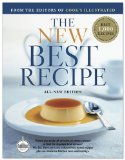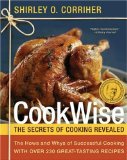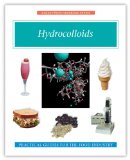Cookbooks with Science
 Since today is National Pie Day, I thought I would list a few of my favorite cookbooks. In particular, the ones that have taught me to bake pie. The ones with science.
Since today is National Pie Day, I thought I would list a few of my favorite cookbooks. In particular, the ones that have taught me to bake pie. The ones with science.
My staple meringue pie recipe comes from The New Best Recipe. The Meyer lemon meringue pie I made from this recipe for Thanksgiving several years ago is what kicked off my love affair with meringue pies, and with meringue in general. But before I can tell you about this cookbook, I need to tell you about seismology.
Seismologists set up simple computational models of the Earth in order to understand why seismograms look the way they do. You can send a basic earthquake source through the model Earth to see what kind of seismogram might result; that’s “forward”. If you then compare the model seismogram to a real one, in order to figure out what model parameters best represent the local geology, that’s doing it backwards, or “inverse” modeling.
This distinction is not terribly relevant to the daily lives of most seismologists. Unless you are interested in computational optimization, the good problems are all inverse problems. “Forward modeling” as colloquial jargon actually refers to iterative forward modeling, which is a method of solving the inverse problem (i.e., obtaining a good model of a physical system by comparing forward modeling results to observations) in which you tweak all of the model parameters and compare the results by hand. (“Inverse modeling” is when the whole process is done by a computer.)
I hate forward modeling. It is very, very frustrating to find that your last tweak not only failed to improve the model fit, but completely screwed up that other part of the waveform you thought you had pinned down, and now there’s no way of getting the one last bit to work without redoing everything. But having to do it left me with an intuitive understanding of seismic waveforms that I would never have acquired otherwise: This peak here came directly from the source, but that one there traveled for some time along the boundary between crust and mantle, and the breadth of those is determined by the local blanket of sediments.
 This is why I love The New Best Recipe: The editors of Cooks Illustrated did forward modeling on blueberry muffins and chocolate chip cookies. They write about the process, including their missteps, so you know that attempting to make moist muffins by adding more butter will ruin the springy texture, but using sour cream works perfectly. By reading the introduction to each recipe, you can cheat your way to the kind of deep, intuitive understanding that usually only comes from years of fruitless head-desking at your own mistakes. Or at least, you can cheat your way to a credible imitation of that understanding, which is all most of us will ever need.
This is why I love The New Best Recipe: The editors of Cooks Illustrated did forward modeling on blueberry muffins and chocolate chip cookies. They write about the process, including their missteps, so you know that attempting to make moist muffins by adding more butter will ruin the springy texture, but using sour cream works perfectly. By reading the introduction to each recipe, you can cheat your way to the kind of deep, intuitive understanding that usually only comes from years of fruitless head-desking at your own mistakes. Or at least, you can cheat your way to a credible imitation of that understanding, which is all most of us will ever need.
 If New Best is iterative forward modeling, then Cookwise is the physics textbook that teaches you how to derive and solve the three-dimensional wave equation (on which much of seismology is based). Shirley Corriher introduces most common cooking techniques, explains the physical and chemical principles behind them, and provides worked examples in the form of recipes. Her long-awaited sequel, BakeWise: The Hows and Whys of Successful Baking with Over 200 Magnificent Recipes, is finally out; I am so very covetous.
If New Best is iterative forward modeling, then Cookwise is the physics textbook that teaches you how to derive and solve the three-dimensional wave equation (on which much of seismology is based). Shirley Corriher introduces most common cooking techniques, explains the physical and chemical principles behind them, and provides worked examples in the form of recipes. Her long-awaited sequel, BakeWise: The Hows and Whys of Successful Baking with Over 200 Magnificent Recipes, is finally out; I am so very covetous.
 I haven’t actually read Hydrocolloids: Practical Guides for the Food Industry. It was recommended to me by a vegan friend, as a comprehensive guide to gooey jibbly stuff like agar and xanthan gum that might be useful when crafting a piece of advanced egg fakery. I’m sure it could also be useful for making flavored slime, solid soups, or vegan/vegetarian versions of more traditional Midwestern jello salads. Purchase at your own peril.
I haven’t actually read Hydrocolloids: Practical Guides for the Food Industry. It was recommended to me by a vegan friend, as a comprehensive guide to gooey jibbly stuff like agar and xanthan gum that might be useful when crafting a piece of advanced egg fakery. I’m sure it could also be useful for making flavored slime, solid soups, or vegan/vegetarian versions of more traditional Midwestern jello salads. Purchase at your own peril.
Finally, there are the books about scientific cooking that are not cookbooks at all. I reviewed the light version in The Science of Deliciousness, but the heavy version (which I also do not own, and highly covet) is Harold McGee’s On Food and Cooking.
So, happy National Pie Day! I have a blackberry meringue, or possibly blackberry-lime meringue, planned for a pie potluck tomorrow. I’ve done it once before, and it turned out well enough, but that was during blackberry season when there were infinite blackberries – I’m a bit worried that my supply of frozen blackberries won’t produce enough juice. Does anyone else have pie plans?
Doug Alder wrote:
Interesting post. I don’t think you’ll have a problem with the frozen berries if you first thaw them and collect the juice and add your thickening agent to that juice. I would consider blind baking the bottom crust for 10 minutes or so at 450 so as to seal it otherwise it won’t have time to seal like it normally would. The freezer is doing the work of bursting the cell structure in the berries and releasing the juices that would otherwise be accomplished by the generation of steam and/or expansion of juice from exposure to heat.
Posted 23 Jan 2020 at 9:14 am ¶
Eric wrote:
When you said it’s National Pie Day, I didn’t realize you actually said “pie” and my first thought was “it’s not March 14th.”
Posted 23 Jan 2020 at 10:51 am ¶
Kim wrote:
Oh, cool. Does The New Best Recipe experiment with changing pressure and humidity? Because my baking is absolutely hopeless at 7000 feet elevation, and my Joy of Cooking just gives some general suggestions and says to experiment. (Maybe I should just do it, especially with chocolate chip cookies. Five-year-olds are very happy to eat any failed experiment that contains chocolate.)
Posted 23 Jan 2020 at 11:00 am ¶
Maria Brumm wrote:
Doug: I’m going to be pre-cooking/juicing the berries and straining the juice before substituting it for lemon juice in the recipe – or at least, that’s what I did last time. My aesthetic is rustic but a custard pie full of blackberry seeds is pushing it.
Kim: I think there’s a bit in the front matter about altitude, but sadly, nothing in the individual recipes. My in-laws use Pie in the Sky for baking in Santa Fe.
Posted 23 Jan 2020 at 12:10 pm ¶
Brian X wrote:
I didn’t realize they’d reissued Cookwise in a new cover — I have an earlier edition and it’s one of the most awesome kitchen science books ever. Bakewise is pretty cool, too. Alton Brown’s are great, though he writes mainly on an introductory level — somewhat different approach from Good Eats imho.
Have you looked into the works of Robert Wolke and Herve This? This in particular is one of the leading lights of molecular gastronomy, and his books are quite a bit cheaper then Ferran Adria’s (only one of which afaik has been published in English anyway). Russ Parsons has some good stuff too — his first book, How To Read A French Fry, is sort of CookWise-light, but his second book, How To Pick A Peach, is all about the vagaries of the modern produce stand and is excellent.
Posted 23 Jan 2020 at 1:26 pm ¶